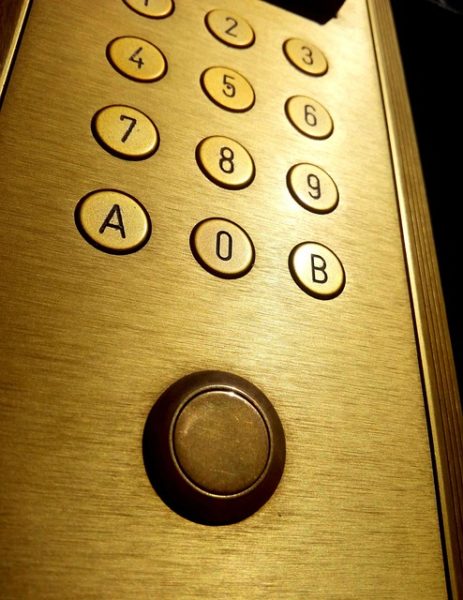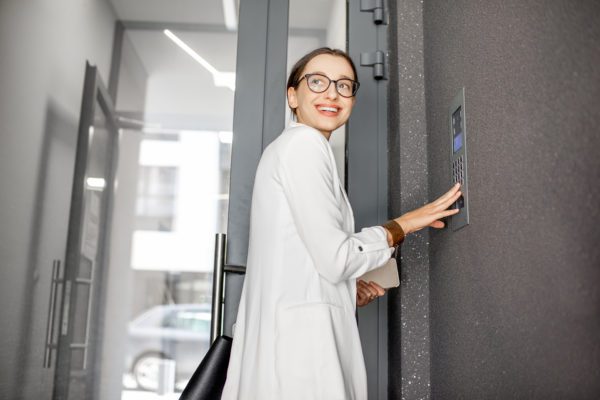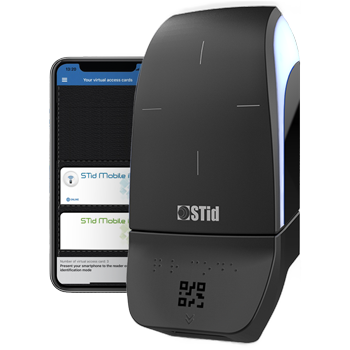
Safe Spaces, Happy Faces: How Employers Benefit When They Prioritise Workplace Security
From intercoms to biometrics, the right door entry system is the one that works for your business
Investing in your company’s security is very important, which is why you need to opt for a system which protects both your employees and assets. There are so many security systems on the market that finding the ideal one can be challenging.
With that in mind, how do you ensure that you have a professional door entry system which is efficient, dependable and very easy to use? The key is specifying your new system correctly and understanding what you want to achieve with it, and therefore which door entry system will best fit your purposes.
The main purpose of a door entry system is to help you control who enters your premises. It’s an access control system designed to help narrow down who can enter, and when.
In terms of security, door entry systems have traditionally relied on whether the person attempting to gain access is carrying valid credentials – so effectively, something they have, or know. In its simplest form a door entry system consists of keys. Door entry systems then began to include proximity cards or fobs, or a pin code. Fobs and cards could be assigned to specific people and therefore when those fobs were presented to an access control reader, they would know that theoretically that person had entered the building.
In recent decades, door entry systems have evolved to include biometric readers. These systems are more secure because they check that the person attempting to gain entry is actually the person whom you have granted access rights through a verification process.
Whether you decide on credentials that people carry or know, or intrinsic biometric credentials for your door entry system will depend on several factors including the security level required, regular and occasional users, additional functionalities and benefits of more advanced systems, and of course, budget.
Door entry systems in commercial businesses should save manpower, save time and improve the flow of people throughout your site, in addition to the prime function of improving security.
Starting from the least secure to the highest level of security.
Keys: this is still a door entry system, keys do physically secure your doors. The drawback is that if you want to keep the whole building secure, if you don’t have a receptionist who is checking ID badges, then you must give everyone a key! These can be copied, left at home, given to someone else and of course, lost which means a replacement cost. It’s the 21st century, we think it’s time to move on..
 A keypad door entry system will have a keypad where people will enter a code which could be a mix of numbers, symbols and letters. It’s rarely more than 4 digits and the most popular code in the UK is Still 1966 or 1234.
A keypad door entry system will have a keypad where people will enter a code which could be a mix of numbers, symbols and letters. It’s rarely more than 4 digits and the most popular code in the UK is Still 1966 or 1234.
Normally a keypad system is also doubled down with a manual check, but that’s not always the case. In some cases, all employees/residents get the same code, yet there are situations where people will receive individual codes, depending on the situation. The advantage for these systems is they are very easy to use and cost effective, and it can be a good solution if the building needs to be accessible 24/7. As we mentioned earlier, the downside is that if someone sees your PIN, or if you give it to them willingly, they can use it indefinitely and thus it can be a problem. It presents a security risk in some cases due to stock or staff areas becoming accessible to ex-employees. In the case of educational establishments, having ex-pupils, teachers or parents know door entry codes once they have left, is a severe security risk.
In terms of health and safety, a pin code door entry system doesn’t give you any information about who entered your building and when, unless you have software and individual pin codes for every user.
Pin code systems can also lead to a loss in revenue. If gyms or sports club members share codes to access controlled pitches and courts with non-members, or if you don’t change the code regularly, then you have non-authorised people enjoying your facilities for free.

These door entry systems require either a sensor tag or a key card. These door access systems are more secure than keys because
you can have a specific card or proximity fob for each employee or person that needs access. These proxy cards can also be customised to access only certain doors, and if you have access control software, certain times. You can allocate and track the cards given to employees. You can also de-activate these cards remotely through access control software, which means you can stop ex-employees or other users from gaining access when they shouldn’t. It’s an affordable system with some merit.
Negatives include unreturned and lost key cards/ proxy fobs incur a cost to you in the business and if employees/ users don’t tell you immediately, this can be a security risk. Credentials that you carry are never as secure as intrinsic biometric factors.

An audio-based door entry system relies solely on verbal identification. These systems have a button, and you press the button, then speak into the microphone. On the other end you need a person hired to communicate and identify everyone entering the building or site. You are reliant on employing someone to do this or taking another member of staff away from their current duties to answer the intercom. You also have no way of verifying that the person speaking through the intercom is the person they say they are.
Audio intercoms are a dated technology that offer little in the way of confirmation of identity and therefore aren’t very secure.
The video door entry systems are similar to the audio option, but in this case, you will have a built-in camera feed. Thanks to this system, the security person tracking the feed will be able to see the person. Of course, they can choose to ask for even more information or an ID card as needed.
Video Door Intercom systems can be configured with multiple options, so you can have different buttons that route calls to different rooms or offices. Certain models also allow you to divert a call to a mobile phone.
These door entry systems are good to identify visitors to site. To use a video intercom for all regular users is not an effective way of managing the flow of people into your site and generally would complement a more robust credential-based system.

 Wired access control solutions are stable and robust, but of course, installation time is longer and there is cabling cost involved.
Wired access control solutions are stable and robust, but of course, installation time is longer and there is cabling cost involved.
Wireless door entry systems will generally be reliant on a WIFI network, or they will be an offline system.
The benefits are of course that there is less wiring, one drawback is that if the network goes down then newly enrolled users may not be able to enter the building.
They can look great because all of the locking mechanism can be within the lock without the need for a controller, or maglock/ electolock as most networked solutions may have.
Online systems are permanently connected to a network, this means that access control events are passed to the software as they happen. This then feeds into reporting, with one of the major benefits being that you know exactly who is on site, and when.
For health and safety purposes and crisis management this can be vital. This logging of people’s movements also has benefits for time and attendance monitoring – you can prove that employees have taken required breaks and worked certain hours.
Offline systems still control access to your site and specific areas within it, but the events will be held in the card or fob until it is read by the master reader. What this means is that you’re limiting access, but you don’t know who is where, when on your site.
 A new and emerging application of existing technology. Access rights are granted through an application on your smart phone and your mobile becomes the credential which you present to the reader. It has a number of benefits, it’s contactless and can be read from a variable distance (determined in the settings). There are different types of activation from handsfree to tapping. Most smart phones have biometric access, so it’s more secure than a code, or card.
A new and emerging application of existing technology. Access rights are granted through an application on your smart phone and your mobile becomes the credential which you present to the reader. It has a number of benefits, it’s contactless and can be read from a variable distance (determined in the settings). There are different types of activation from handsfree to tapping. Most smart phones have biometric access, so it’s more secure than a code, or card.
You can also onboard new users remotely which delivers a good user experience. Find out more here.
 One of the challenges with basic door entry systems is they can be bypassed with ease. For example, you can borrow a card or PIN from someone and that alone is enough to gain access to a site or area you are not authorised to be in. Internal collusion in theft is a big problem in many industries – sharing of credentials where there is no traceability is inviting a lack of accountability.
One of the challenges with basic door entry systems is they can be bypassed with ease. For example, you can borrow a card or PIN from someone and that alone is enough to gain access to a site or area you are not authorised to be in. Internal collusion in theft is a big problem in many industries – sharing of credentials where there is no traceability is inviting a lack of accountability.
Biometric systems check for specific biological features when a person tries to enter the premises of your business. The person must already have been enrolled on the system and have a valid biometric template held within the software. High matching thresholds mean that the possibility of a false positive (when someone not enrolled on the system is accepted on the biometric reader) is exceptionally slim.
Normally, biometric systems encompass either a facial or fingerprint scanner: Find our more about Almas’ biometric reader range. You have irrefutable proof that the person permitted in the software, is the person that has entered your site. Records are admissible for both HR or Police investigation (provided you’re GDPR compliant – you can read more about this here).
Investing in a door entry system is important for a variety of reasons:
A Door entry system delivers added benefits to your business such as reducing the need for reception or gate security, improving health and safety compliance, improve the flow of people through your site and of course, they keep your site safe and secure! There are many different systems available, choosing the right one involves assessing multiple different factors.
If you’d need an expert opinion, Almas Industries’ Security Consultants are trained to assess and advise as to which access control system would be right for your business. Call us today to book your free consultation and site survey.
